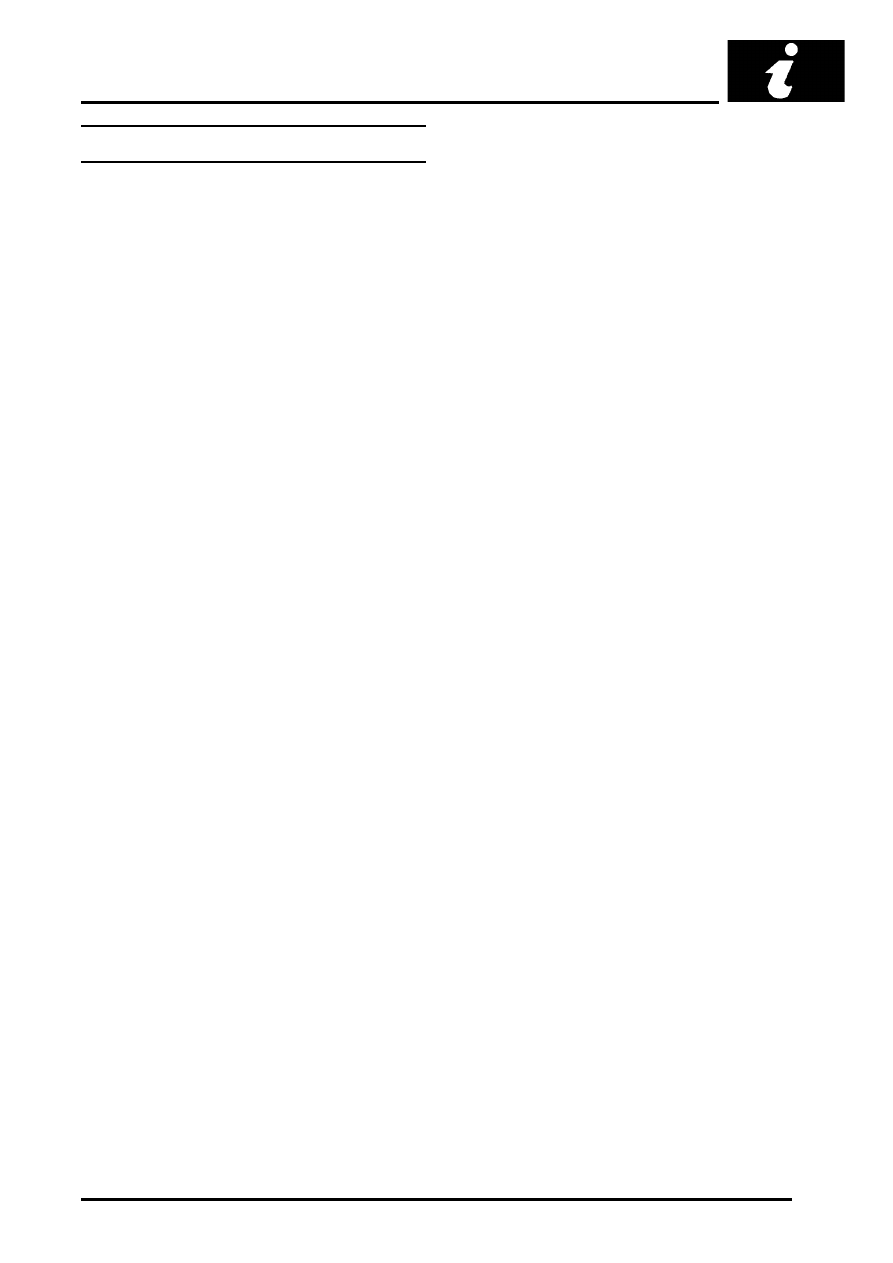Freelander 1. Manual - part 9

GENERAL INFORMATION
03-27
SRS component replacement policy
The following information details the policy for
replacement of SRS components; either as a result
of a vehicle accident or as a result of vehicle age.
Impacts which do not deploy the airbags or seat
belt pre-tensioners
Check for structural damage in the area of the
impact, paying particular attention to bumper
armatures, longitudinals, crash cans and bracketry.
Impacts which deploy the airbags and/or seat
belt pre-tensioners
The inspection and replacement policy is dependent
on the type and severity of the crash condition. The
following guidelines are the minimum that should be
exercised as a result of the deployment of specific
SRS components.
Front airbag/ seat belt pre-tensioner deployment
(driver and passenger)
If the front airbags and/or seat belt pre-tensioners are
deployed as a result of a front, front angled or side
impact, the following parts must be replaced:
l
Driver airbag module
l
Passenger airbag module (where fitted)
l
SRS flyleads
l
SRS DCU
l
Rotary coupler
l
Front seat belt pre-tensioners
In addition, the following should be inspected for
damage and replaced as necessary:
l
Front seat belt and buckle tongue (anchorage
points, webbing etc.)
l
Fascia moulding adjacent to passenger airbag
module (where fitted)
l
Steering wheel (if damage is evident)
l
Front seat frames and head restraints (if there is
evidence of damage to the seat frame or
cushion pan)
l
Steering column (if adjustment is lost or there
are signs of collapse)
l
Front seat belt height adjusters on 'BC' posts (5
door models only)
l
Rear seat belts and seat belt buckles (webbing,
buckle covers, body anchorage and tongue
latching function)
Rear impacts
Rear impacts may cause the front seat belt pre-
tensioners to deploy. If this occurs, the seat belt pre-
tensioners must be replaced. In addition, the
following components should be inspected for
damage and replaced as necessary:
l
Front seat frames
l
Front seat belts and buckle (retractors,
webbing, tongue latching, buckle covers, body
anchorages and 'D' loops)
l
Seat belt height adjusters (5 door models only)
l
Rear seat belts and seat belt buckles (webbing,
buckle covers, body anchorage and tongue
latching function)
Periodic replacement of SRS components
The performance of the propellants within airbags
and seat belt pre-tensioners will deteriorate over a
period of time. As a result, it is essential that the
airbags and seat belt pre-tensioners are periodically
replaced to maintain occupant safety. Airbags, seat
belt pre-tensioners and the rotary coupler should be
replaced at the recommended intervals.